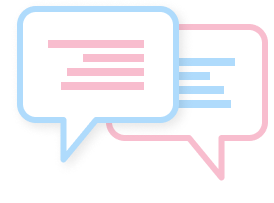Let’s start with the definition of what an interface is. An interface is an interaction mechanism of the two systems. From this point, a user interface is an interface created to facilitate direct interaction between a system and a user.
In the display of a device, there are two common types of user interfaces:
- The command-line interface (CLI), which contains only text, and is mainly used by programmers;
- And the graphical user interface (GUI), to which I will apply. It includes images, windows, icons, menus, etc.
In this article, I will limit myself especially to the type of user interface responsible for visual perception: GUI.
The user interface or user interface design is a discipline to design user interfaces for machines and software, such as computers, appliances, mobile devices, and other electronic devices, with a focus on responsiveness and aesthetics, maximizing usability To foster good user experience. As part of UX, the design of the user interface focuses more on colors and typography. Simply put, the design of the user interface is usually a combination of:
- Visual design (appearance) and
- Interaction design (how it works).
As an example, the UX design focuses on where to place the button for the user to find it easily, while the user interface design will think about how to make this button look good so that the user wants to press it.
Why do we need a user interface?
The product must be visually attractive and beautiful. The UI design creates a common visual language and hierarchy that improves the way users get involved with your product. The user interface brings together concepts of Interaction Design, Visual Design and Information Architecture.
User interface elements include buttons, text fields, checkboxes, sliders, icons, labels, mailboxes, paging, etc.
User Interface Design Parts
An attractive user interface design cannot be developed without the use of all the techniques in the following fields:
1. Visual design
Convert the aesthetics of the product in general and compromise your audience with user-centered principles such as web-oriented design or conceptual art. The main objective of visual design is to mold and improve the UX with the help of illustrations, photographs, typefaces, spaces, designs, and colors. «Line, shape, negative space, texture»: it’s all about visual design. Learn more about it on the Interaction Design Foundation page on Visual Design.
2. Colors
Choosing the right colors for your project is very important due to mental associations with emotions and meanings. It is also important to follow the colors of the brand and use them wisely according to the design you want to create and the message you want to share.
3. Graphic design
Graphic design is responsible for combining images, typography or motion graphics to impress its customers. The graphic design aims to pursue pixel perfection. This is to ensure that the texts have perfect kerning and that the colors comply with the brand guidelines. Graphic design is a specialized discipline, and there is a certain level of craftsmanship and a set of specialized skills (such as typography and color theory) necessary to produce excellent images. It is often mixed with visual design.
4. Mockups
A mock-up is a full-scale scale or model of a design used for demonstration, design evaluation, promotion, and other purposes. The models were intended to show the final appearance of the design with visual details, such as colors and typography. Wireframes, models, and prototypes often mix but only represent the different stages of the design flow. A wireframe is a low-fidelity way of presenting a design, outlines structures and designs. Unlike a wired structure, a model looks more like a finished product or prototype, but it is not interactive and cannot be clicked. The models are used to offer a range of options to structure screens in applications. Together with the designs, they help organize the content and make the user interface understandable.
5. Typography
Typography is a driving force in all forms of communication art. This is the art and science of font style, appearance and structure, which aims to give readers an aesthetic and easy-to-read copy. Typography helps to add a printing power to your messages in a screen or print-based project. A good typeface should:
- Work well in various sizes;
- Have easily distinguishable letter shapes;
- Have a recognizable hierarchy for a better perception.
Besides, today, the design of the user interface depends largely on the movement design that creates instantaneous user feedback crucial to any user interface. Animations, visual effects, and screen transitions have a tremendous impact on how first-time users will get involved with the application.
Types of user interface software prototypes
As I mentioned before, the prototypes are different from wireframes and models. Previously I added prototypes to the UX design, but to the extent that they are generally used for users to test the product, the prototypes must be high-fidelity, interactive, and fit as closely as possible to the end-user interface. That is why in the next part I will talk about user interface prototypes.
Prototypes simulate the interaction between the user and the interface in the most realistic way possible. There are 5 common types of user interface software prototypes:
Paper prototyping (sketches)
Drawing in the prototyping process to record the main ideas (usually on paper), it is limited to the generation of ideas and communication with the design team.
Prototyping low fidelity
The low fidelity prototypes are approximate representations of concepts that help validate these concepts early on in the design process. Simply put, this is a rough presentation of our ideas. Design teams often use low-fidelity prototypes to emphasize interactions and thoughts.
Rapid prototyping
Rapid prototyping is a medium-fidelity technique based on user research. Rapid prototyping helps the designer think about what must be done to achieve the ultimate goal. Go through a series of quick iterations and feedback sessions that could solve the problem. The main thing about rapid prototyping that makes it very fast is the use of a wide range of applications, different digital prototypes, and user research tools.
Creation of high-fidelity prototypes
Unlike the creation of low-fidelity prototypes, the creation of high-fidelity prototypes requires more time, skills, and specialized resources. A high-fidelity prototype is an interactive computer-based representation of the design that looks more like the final version in terms of details and functionality. It usually presents usability and realism all in one.
HTML prototyping
The HTML prototype is a prototype developed using HTML. It can be seen in the browser. It has no stylistic options and has a minimal appearance, but the HTML prototype can go to the coding stage much faster than other prototypes because it has already been partially written in code.
Each type of prototyping has its list of digital tools that best adapt to the process. Keynote slides from Google and Adobe to InVision and XD…
Principles of user interface design
When creating a user interface prototype, a good designer follows the following 6 user interface design principles (according to Larry LeRoy Constantine):
1. Structure.
He refers to the general architecture of the user interface and says that the models must be clear, consistent, and recognizable and must contain related, separate, unrelated elements, and make similar objects resemble each other.
2. Simplicity.
The design should facilitate simple and common tasks, communicate clearly and simply in the user’s language. Shortcuts should be significantly related to longer procedures.
3. Visibility.
There is no redundant information and strange alternatives. The design must make all the options and materials necessary for a given task visible without distraction.
4. Feedback.
Users must be informed and understand all relevant actions, changes in status or condition, errors or exceptions in a clear, concise and familiar manner.
5. Tolerance.
The design must be flexible to reduce errors and misuse by allowing undo and redo.
6. Reusing.
The design must reuse internal and external components and behaviors, maintaining consistency with the purpose rather than arbitrary coherence.
User Interface Techniques
We will talk about how to comply with all the main user interface design principles mentioned above. To do this, designers use some simple but beneficial user interface techniques.
First, a user interface technique (interaction technique or input technique) is a combination of hardware and software elements that provide a way for users to perform a single task. For example, click on a button, press a key, make a mouse gesture or pronounce a voice command.
In the design of the user interface, there are dozens of different effective techniques that help the user to perform the task. I would like to name the most famous user interface techniques.
- Interaction styles such as filling in forms or menu selection, etc.
- Interaction design patterns represent a way to describe solutions to common usability or accessibility problems in a specific context. In other words, this is a formal way of documenting a solution to a common design problem.
- Organizational structures and schemes
- The hierarchical structure is based on the brain’s ability to distinguish objects based on their physical differences, such as size, color, contrast, alignment, etc.
- A sequential structure where users follow the special route completing the tasks one by one.
- Matrix structure when users can choose the navigation mode by themselves in alphabetical, chronological order, by topic (grouping of specific themes or genres) or by user groups (a type of audience).
- Content organization models
- Single page model.
- A flat model where all pages are equal and are located at the same level of navigation.
- The index model allows users to access pages through the list of pages that is available on each page.
- The strict hierarchy model offers users only one way to access subpages, from the main page.
- The coexisting hierarchy model provides users with various ways to access the content but guides them through a certain path to take the expected actions.
- The Daisy model intended to guide users to the home page each time they perform a task.
- Visualization technique that emphasizes the output and aims to organize and structure numerical and non-numerical data in a convenient and clear, visually attractive way.
- Research and innovation. Some examples:
- interactive layers;
- Custom artwork;
- Split screens;
- Bold typeface;
- User interface without buttons;
- Animations;
- Vibrant and bold colors;
- Photo content
There are more examples, but most of them can be classified into the previous groups.
User interface design process
There are several phases and processes in the design of the user interface that I can name. These are some of the most viable:
Collection of functionality requirements.
This step covers the assembly of a list of the functionalities required to achieve the project objectives and the potential needs of the users. Usually, this stage begins right after the discovery session with the client.
User and task analysis.
This is the study on how potential users will perform the tasks that the design must support. This stage is related to the research of users that we do as part of the UX design process.
Information architecture (IA).
This process covers the development of the process and the information flow of the system. During this phase, we chose the UI interaction style, the design pattern, and the visualization technique. Many of the UI design techniques I described above were formed during the Information Architecture stage.
Prototyping.
This stage covers the development of prototypes, wireframes, models, paper prototypes or simple interactive screens.
Usability inspection.
The usability inspection can be used to evaluate prototypes or specifications for the system, which generally cannot be tested on users. The usability inspection methods are a cognitive path, a heuristic evaluation, and a pluralistic path.
Usability tests.
The user interface design tests allow us to understand the reception of the design from the viewer’s point of view. Typically, during usability tests, users are asked to complete tasks to see where they encounter problems and experience confusion.
Graphic user interface design (GUI).
This is a real aspect of the graphic user interface design. At this point, by using typography, photography, and animation, we build visual communication and problem-solving methods.
Software maintenance.
Occasional maintenance goes after implementation to correct software errors, change features or completely update the system.

Recent Articles
The Top 10 Successful App Developers...
Hiring an app developers company is no easy feat. In...
Top 10 Innovative Mobile App Developers...
San Francisco has an incredibly diverse and a magnificent tech...
Top 10 Most Trusted Mobile App...
Houston boasts of a splendid tech landscape that is mushrooming...






